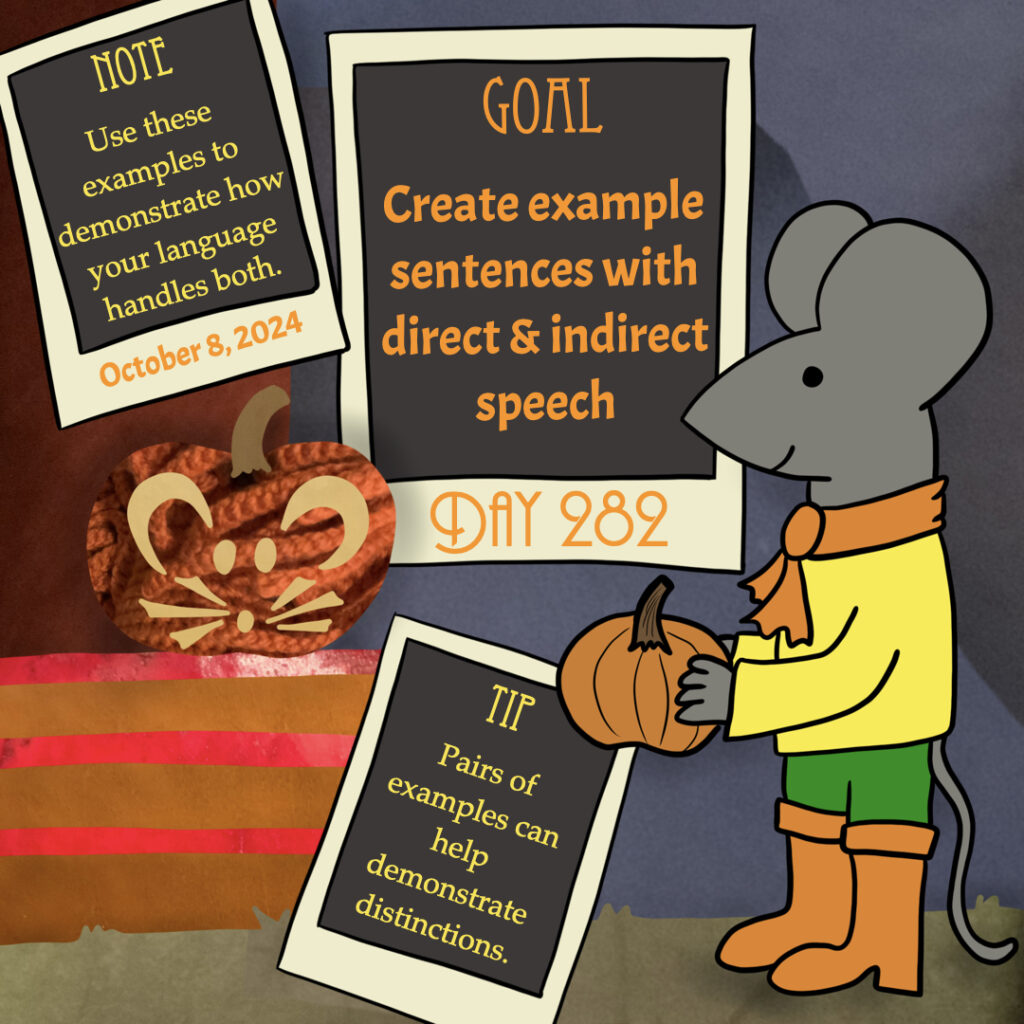
Goal: Create example sentences with direct & indirect speech
Note: Use these examples to demonstrate how your language handles both.
Tip: Pairs of examples can help demonstrate distinctions.
Work focus: Create/Make/List
Today’s goal is to create example sentences with direct and indirect speech to demonstrate how your language handles these situations. It’s helpful to include pairs of examples when you do this, shifting the same content from direct to indirect speech. For instance, you might include pairs like these:
- Mona said, “I planted a flower.” / Mona said that she planted a flower.
- Korra told me, “The wind destroyed the bridge.” / Korra told me the wind destroyed the bridge.
Using pairs like this helps to draw attention to the differences between these similar structures. If your language doesn’t mark direct and indirect speech differently, then you might just be showing that a single utterance in your language could be translated both ways.
As you work, be sure to consider if the quotative can occur in different positions relative to the (in)direct speech. For instance, in English, you can place the quotative after direct speech (e.g. “I planted a flower,” Mona said), yet that strategy is associated with written text—speakers tend to keep the quotative in initial position in speech.
